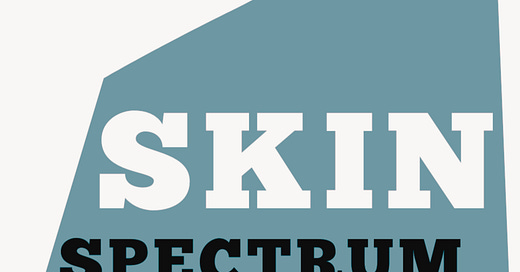Practical cosmetic pearls for dark skin
Dr. Renée Beach provides tips on electrodessication, facial volume restoration, and lip augmentation (1,500 words, 7 minutes)
During a presentation at the 2024 Colloquium on the Black Patient, Dr. Renée Beach described several cases treated at her practice and practical pearls illustrated by each case.
A dermatologist, Dr. Beach is the medical director of DermAtelier on Avenue in Toronto. In addition to her dermatology practice, Dr. Beach collaborates with select research projects, teaches dermatology residents, and highlights the profession's expertise as the on-air dermatologist on the daytime talk show “The Social.”
The first case was of a patient who presented with various facial dermatoses including dermatosis papulosis nigra and seborrheic keratosis. In the facial area, concerns about pigment changes or scarring are high. The patient was treated with electrodessication. “The pearl here is to do test spots for your patients,” said Dr. Beach. “It gives you confidence. It gives the patient confidence and a preview of what their healing journey and their appearance will look like. And [for electrodessication] we want to make sure that the test spot is at a lower level in our brown and black skin patients, [level] 1.0 to 1.3.”
The second case was a patient seeking mid-facial volume restoration. Much of the patient’s improvement was produced with a brow lift that improved the face’s symmetry. Dr. Beach said the important takeaway from the case was that the goal should be to harmonize the face when pursuing restoration so that the eye is not drawn to one feature or area.
A third patient, a woman in her mid-20s, came to the clinic seeking fuller lips. Dr. Beach noted that the standard “Golden ratio” of the vermillion upper lip to the vermillion lower lip is considered 1:1.6. However, this is not always appropriate for patients of all ethnicities. “A lot of my Brown and Black-skinned patients veer closer towards a one-to-one ratio, or maybe even one to 1.3,” she said. “The pearl here is we want to respect patients’ vermilion ratio. We're not trying to distort them into another person or to mimic another ethnicity. We want to respect their natural beauty.”
Bottom line: Understanding the reactivity of darker skin and accounting for it, and adjusting treatments to highlight and support the existing facial structure of patients of various ethnicities can produce better cosmetic outcomes.
From the literature on dermatology in skin of colour
Skin rejuvenation through topical application of indocyanine green with diffractive optical element mode of 785 nm picosecond laser in Asian females
Because the dye indocyanine green (ICG) has robust absorption near the 800 nm wavelength, researchers examined the clinical effects of combining ICG with a 785 nm picosecond laser for treating photo-aged skin in Asian patients.
Investigators treated the facial area of 16 female patients with Fitzpatrick skin types III and IV and a mean age of 58.44±5.24 years. Each patient had 0.0125% ICG cream applied, followed by 785 nm 600 picosecond laser treatment. Physicians administered 3,000 individual laser exposures using diffractive optical element mode at a pulse energy of 200 mJ and frequency of 10 Hz. They treated hyperpigmented lesions using the Zoom handpiece set at a spot size of 3 to 4 mm, a pulse energy of 60 to 120 mJ, and a frequency of 3 to 7 Hz.
Patients underwent five sessions of treatment at intervals of one to two weeks. Physicians assessed wrinkles, pores and pigmented lesions at the initial assessment and four weeks after the final treatment using the Modified Fitzpatrick Wrinkle Scale and 10-point visual analog scale, respectively. They also performed skin biopsy of the postauricular area on two consenting patients.
The authors observed significant improvements in wrinkles (p=0.02), pores (p=0.034), and hyperpigmentation (p=0.036), along with increased patient subjective improvement. Adverse effects were transient and well-tolerated. Hematoxylin, eosin, and Masson's trichrome staining revealed increased and thickened dermal collagen fibres. Immunohistochemical staining revealed increased collagen I and III expression throughout the papillary and upper reticular dermis and the diffuse increase of STRO-1 in the dermis.
Cosmetic considerations in dark-skinned patients
This review focuses on basic knowledge and key points in performing safe cosmetic-related procedures in patients with dark-complexioned skin.
“For dermatologists, diversities of human races result in an opportunity to encounter patients with various skin types. Cosmetic procedures have gained more popularity and become more accessible over the past decades. Thus, the selection of appropriate treatment protocol for each patient becomes inevitable,” the authors write.
Topics covered include:
Structural differences in darker skin
Superficial chemical peels
Microdermabrasion
Cosmetic injectable materials, including botulinum toxin and hyaluronic acid soft tissue fillers
Lasers and energy-based devices
The efficacy and safety of neubotulinumtoxinA for the treatment of forehead horizontal lines in Asians—A clinical, prospective, interventional, split-face study
In a 12-week, prospective, single-centre study, researchers evaluated the efficacy and safety of neubotulinumtoxinA for treating forehead horizontal lines.
Investigators recruited 30 subjects, each receiving a single treatment session, with neubotulinumtoxinA applied to the left side of the forehead and onabotulinumtoxinA to the right side. Physicians performed a superficial injection in all individuals, where the product was injected subdermally in the frontalis muscle. Researchers conducted evaluations at baseline, seven days, 14 days and four, eight, and 12 weeks after treatment, both when the eyebrows were at maximum lift and in a resting position. Two physicians assessed treatment efficacy, and patients self-assessed, using the Fitzpatrick Wrinkle Classification system. Adverse events were documented to evaluate safety.
Findings showed no statistically significant difference in the efficacy of neubotulinum and onabotulinum for treating forehead wrinkles, as indicated by p-values above 0.05 for both static and dynamic conditions. No safety and adverse events were observed in both formulations.
The effectiveness and safety of 3% tranexamic acid cream vs. 4% hydroquinone cream for mixed-type melasma in skin of colour: a double-blind, split-face, randomized controlled trial
The authors of this paper note topical hydroquinone (HQ) is the gold standard for melasma treatment but has numerous side effects. They conducted this study to assess the effectiveness of topical tranexamic acid (TA) as an alternative for melasma treatment.
Researchers recruited 20 female subjects for this double-blind, split-face, randomized controlled trial. All participants were 18 to 60 years old, had been diagnosed with melasma and had Fitzpatrick skin types III to V. Investigators evaluated the effectiveness of 3% TA versus 4% HQ cream over eight weeks, assessing the modified melasma area and severity index (mMASI), melanin index, erythema index, and side effects. They also recorded subjective improvement using the patient global assessment (PtGA).
Investigators observed a significant decline in the mMASI score at weeks four and eight in both groups compared to baseline. There were no statistically significant differences in PtGA scores between the 3% TA and 4% HQ groups.
At the intersection of skin and society

The Dr. Peter Centre, a Vancouver healthcare facility, raised a totem pole on Aug. 13, 2024. This act marks “a significant step in the Centre’s commitment to reconciliation and community healing,” according to a press release.
The Centre provides compassionate care and support to individuals living with complex health conditions such as HIV/AIDS, mental health challenges, substance use, and homelessness.
The event occurred on unceded Coast Salish territory, with Elders, community members, and supporters attending the ceremony.
Carved by Squamish artist John Spence, the pole now stands in the Centre's lobby and is dedicated to Shirley Young, the mother of Dr. Peter Jepson-Young. Bearing the Squamish name cheshá7min tx̱wtá7 ta úxwumixw (Mother of the Community), the totem features a grandmother moon and a mother bear embracing her two cubs, symbolizing protection.
Spence, the Centre's Artist-in-Residence, reflected on the totem's significance:
“This totem's inspiration is protection, symbolized by our grandmother moon, one of our spiritual protectors, and the grizzly bear, the protector of the forest. It represents the female aspect of protection and connection to the grandmother, the mother, and the children.”
Patrick Smith, Manager of Indigenous Services at the Dr. Peter Centre, highlighted the totem pole's broader impact:
“I think the totem makes the Dr. Peter Centre a safer, more inclusive space, saying, ‘We see you and value you’ from the moment you enter. Having [the project] led by a local Indigenous artist who is well respected in the community helps to build bridges between the Centre and the host Nations upon which we all live.”
The Dr. Peter Centre recognizes the disproportionate impact of colonial systems on Indigenous communities, leading to heightened vulnerability to HIV, substance use, violence, and poverty. In response, the Centre's culturally responsive care programs integrate traditional medicines, cultural practices, and artistic activities within its harm reduction services, creating an environment that honours the cultural identity of its Indigenous participants. According to the release, this holistic approach is now being recognized and adopted as a model for care across the country.
This week
Aug. 31 is International Day for People of African Descent
Sept. 1 is National Acne Positivity Day in the U.S.
September is Alopecia Areata Awareness Month
Something to think about in the week ahead . . .
—Damian Woetzel, U.S. dancer and choreographer (1967 to present)
Enjoy the long weekend!
Skin Spectrum Weekly is taking a break for Labour Day. We will return on Sept. 9.
If you like Skin Spectrum Weekly, why not check out Chronicle’s other publications, podcasts, and portal?
The Chronicle of Cosmetic Medicine + Surgery is a scientific newspaper providing news and information on practical therapeutics and clinical progress in dermatologic medicine. The latest issue features:
Dr. Geeta Yadav (Toronto) provides expert advice on the management of melasma using fractionated lasers.
Drs. Andrei Metelitsa (Calgary), Lisa Kellett (Toronto), and Vince Bertucci (Woodbridge, Ont.) review new and upcoming soft tissue filler products that may benefit Canadian practitioners.
Dr. Zaki Taher (Edmonton) shares his thoughts on the importance of lasers, radiofrequency microneedling, and platelet rich plasma treatments to a cosmetic dermatology practice.
Plus regular features, including the popular feature “Cosmetic Update” that provides a rapid overview of important news in the cosmetic space.
You can read a recent digital edition of The Chronicle of Cosmetic Medicine + Surgery here. To apply for a complimentary subscription or to request a sample copy, please email health@chronicle.org with your contact information.
The Women in Dermatology e-newsletter updates readers with new findings concerning dermatologic issues affecting women and the female dermatologists who care for them. Read the current issue here.
Season three of the Vender on Psoriasis podcast with Dr. Ron Vender has begun. Listen to the new season here. In episode five, Dr. Vender discusses whether vitamin D influences psoriasis severity, sex differences in psoriatic inflammation itch, and the risk of psychiatric disorders associated with acitretin.
And if you’re looking for a web destination for all things derm, visit derm.city, “Where Dermatology Lives.” Please like, rate, review, and share it with your colleagues.







